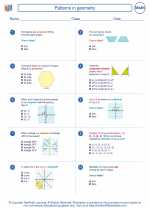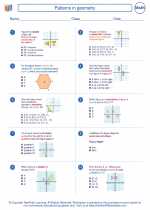What is a Simple Ratio?
A simple ratio is a comparison of two quantities using division. It is often written in the form a:b or a/b, where a and b are two numbers. Simple ratios are used to compare the sizes of two quantities and can be written in different forms.
Writing Ratios
To write a ratio, you need to compare two quantities. For example, if you have 3 apples and 5 oranges, the ratio of apples to oranges would be 3:5 or 3/5. The order of the numbers in the ratio is important and indicates which quantity comes first in the comparison.
Equivalent Ratios
Ratios that express the same comparison are called equivalent ratios. You can find equivalent ratios by multiplying or dividing both parts of the ratio by the same number. For example, the ratios 2:3 and 4:6 are equivalent because you can multiply 2 and 3 by 2 to get 4 and 6.
Using Ratios in Problem Solving
Ratios are often used in problem-solving situations, such as when you need to mix ingredients in a recipe or when comparing different quantities. Understanding how to work with ratios is important for solving a variety of real-world problems.
Study Guide
- Understand the concept of a ratio and how it represents a comparison of two quantities.
- Practice writing ratios in the form a:b and a/b.
- Learn how to find equivalent ratios by multiplying or dividing both parts of the ratio by the same number.
- Work on solving problems that involve using ratios to compare quantities or mix ingredients.
[Simple Ratio] Related Worksheets and Study Guides:
.◂Math Worksheets and Study Guides Eighth Grade. Patterns in geometry

 Worksheet/Answer key
Worksheet/Answer key
 Worksheet/Answer key
Worksheet/Answer key
 Worksheet/Answer key
Worksheet/Answer key
